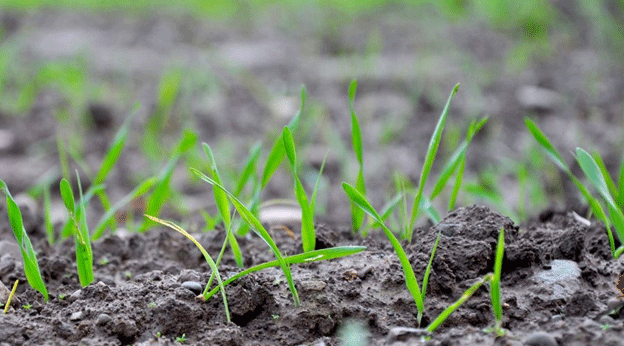As autumn weather conditions have disrupted winter wheat drilling across the country, many farmers are facing delays similar to those experienced last year. Wet conditions and increased acreage planted with maize and root crops have left many with limited windows for sowing wheat. As Mike Thornton, head of crop production at ProCam, explains, this year’s situation calls for flexibility and careful planning in response to late drilling. He suggests a thoughtful, strategic approach to manage crops effectively and avoid reactive decisions that may hurt yields.
Three Key Areas to Focus on for Later-Drilled Winter Wheat
- Seedbed Preparation: The Foundation for Success
One of the most critical elements for successful late drilling is seedbed preparation. For later-drilled cereals, it’s important to ensure that the seedbed has good tilth, drainage, and a stable structure. Thornton emphasizes that rushing to plant crops in poorly prepared soil can lead to poor outcomes. “Crops that went wrong last season were often those that were hastily planted in unsuitable conditions,” he notes. While time is of the essence, if conditions aren’t ideal, farmers should wait for better weather windows, even if it means drilling into January or February.
Research from 2024 demonstrated that, despite the later planting dates, winter wheat can still perform well in these circumstances, with fewer issues from pests like grassweeds and barley yellow dwarf virus. Moreover, later-planted wheat tends to have reduced susceptibility to diseases like Septoria. Farmers should plan for seed rates to be adjusted to account for possible plant losses and lower tillering, and consider choosing faster-developing wheat varieties.
- The Role of Ploughing in Improving Soil Health
While ploughing has become less common due to environmental concerns, Thornton recommends that farmers re-evaluate its benefits, especially for fields that have experienced compaction or poor drainage. Ploughing can help open up the soil, improve water movement, and reduce compaction, ultimately benefiting crop yields. Fields where maize was harvested late, particularly in wet conditions, may benefit from this practice to counteract soil damage. Thornton advises farmers to assess each field individually and weigh the benefits of ploughing against the associated costs. - Tailored Inputs for Optimal Crop Growth
Later-drilled wheat crops often suffer from weaker root systems and fewer tillers, making effective nutrition management essential. Thornton advises farmers to conduct soil tests to understand nutrient levels, allowing them to adjust inputs according to the needs of each field. Early spring nitrogen (N) applications are vital for strong plant development. Additionally, farmers can explore alternative growth-boosting options like biostimulants, phosphite treatments for root growth, or foliar-applied bacteria to fix nitrogen inside the plant. These solutions may provide additional support for crops that were planted later than usual.
Farmers should also be mindful of the increased risks posed by slugs, which are more likely to damage later-planted wheat. The wet conditions during maize planting this year may lead to an increased slug population, so proactive management strategies are important. In addition, the shorter weather window for applying herbicides in late-drilled crops means that one robust pre-emergence herbicide application may be more effective than multiple smaller applications.
Conclusion: Proactive Management for a Successful Winter Wheat Crop
The delayed drilling of winter wheat presents unique challenges, but with careful planning and timely interventions, farmers can still achieve strong yields. By focusing on proper seedbed preparation, considering ploughing when necessary, and tailoring inputs to suit later-drilled crops, farmers can minimize risks and optimize crop performance. Despite the challenges posed by late sowing, the right management strategies can ensure that winter wheat grows successfully and contributes to a productive season.
Error




